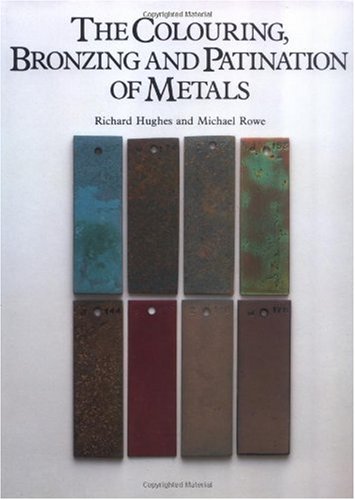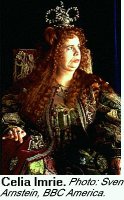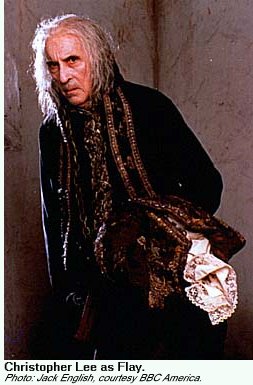Here are some pictures from the 3 week set construction in February 2009 for Bush Telly at the Ellerslie International Flower Show.
Thursday, October 28, 2010
The first film set at Ellerslie
Location:
Christchurch, New Zealand
Tuesday, October 26, 2010
Working from an old dream
For many years I had this recurring idea about a TV programme to be called Bush Telly. I had some very clear dreams of what the film set would look like. It would be set in an ancient potting shed on the edge of some bush.
Finally in 2008 I got the chance to design and build this set for an entry into the 2009 Ellerslie International Flower Show. The idea was that Bush Telly would then film a series of programmes using the set while the show was open to the public.
By strange coincidence, Salma Abarro had applied for an internship with Bush Telly. Salma was a design graduate from Montreal University and was a Berber from Morocco.
Salma arrived and did the pencil drawings while I made a series of models. Each set of drawings and models getting closer to the images in my mind. The thick set of construction drawings were copied off and later used for finding sponsorship and farming out as much of the prebuilding work as was possible.
The whole design process took two months, and these are the pictures taken by Eric Ning-Yuan Shen from the final 1:20 scale model.
I think we all learned a lot from this experience. The set won the top awards at the flower show for that year.
Finally in 2008 I got the chance to design and build this set for an entry into the 2009 Ellerslie International Flower Show. The idea was that Bush Telly would then film a series of programmes using the set while the show was open to the public.
By strange coincidence, Salma Abarro had applied for an internship with Bush Telly. Salma was a design graduate from Montreal University and was a Berber from Morocco.
Salma arrived and did the pencil drawings while I made a series of models. Each set of drawings and models getting closer to the images in my mind. The thick set of construction drawings were copied off and later used for finding sponsorship and farming out as much of the prebuilding work as was possible.
The whole design process took two months, and these are the pictures taken by Eric Ning-Yuan Shen from the final 1:20 scale model.
I think we all learned a lot from this experience. The set won the top awards at the flower show for that year.
Labels:
2009,
Ellerslie International Flower Show,
intern,
model,
Salma Abarro,
set design
Monday, October 18, 2010
Leaf chair
This is Leaf Chair, a chair that I sculpted in clay in 1998 for Creative Castings to make copies of. It include some small faces around the base that were provided from another source.
Sadly these film photo's don't really do the chair justice but they are the only visual record.
It was really fun to do with vines entwining the chair.
I remember it was hellish heavy.
Sadly these film photo's don't really do the chair justice but they are the only visual record.
It was really fun to do with vines entwining the chair.
I remember it was hellish heavy.
Sunday, October 17, 2010
Camera rig trials
Bush Telly camera operator Sasha Shamilov with rig S-1
This prototype rig contains
A lot of ingenious tweaks expected.
This prototype rig contains
- Canon EOS 5d Mk 2
- Arri MMB-1
- Small HD DP6 Field Monitor
- Extender Lens
- Canon EF24-105 L series
- Red Base Production Pack
- Arri Mini Follow Focus
- Redrock Micro Microclamps
- Tekkeon Battery
- Vinten Vision 8 Tripod
- Many parts handmade by Sasha
A lot of ingenious tweaks expected.
Labels:
2010,
Arri,
Canon,
EOS 5D Mk 2,
equipment,
Sasha Shamilov
Saturday, October 16, 2010
HDR - high dynamic range imaging
HDR or high dynamic range imaging is a technique to make images closer to what the human eye can see. Tutorials available on the web
Here are some examples of the use of this technique from clips found on the web. Many of them are filmed with a Canon 5d Mk 2, the camera that Bush Telly own's and I am very lucky enough to use.
The HDR Video Demonstration Using Two Canon 5D mark II's from Soviet Montage on Vimeo.
The Dalescapes of Time. A short film by Patryk Kizny from Patryk Kizny on Vimeo.
The Dalescapes of Time.
A short film by Patryk Kizny.
Shot and edited by Patryk Kizny, Guest footage by Agnieszka Gonczarek. The Dale of Jelenia Gora, Poland. August 2010.
HDR Timelapse demo from Timelapse.it on Vimeo.
Here are some examples of the use of this technique from clips found on the web. Many of them are filmed with a Canon 5d Mk 2, the camera that Bush Telly own's and I am very lucky enough to use.
The HDR Video Demonstration Using Two Canon 5D mark II's from Soviet Montage on Vimeo.
The Dalescapes of Time. A short film by Patryk Kizny from Patryk Kizny on Vimeo.
The Dalescapes of Time.
A short film by Patryk Kizny.
Shot and edited by Patryk Kizny, Guest footage by Agnieszka Gonczarek. The Dale of Jelenia Gora, Poland. August 2010.
HDR Timelapse demo from Timelapse.it on Vimeo.
Friday, October 15, 2010
Inner Struggle - celebrating the imaginative power of the dyslexic mind


 This is a wonderful piece by Richard Taylor of Weta Workshop up in Wellington.
This is a wonderful piece by Richard Taylor of Weta Workshop up in Wellington.A dyslexic mind is clearly a good start to have in life.
I wonder who did the bronze casting, it's a very well done.
This sculpture garden can be seen outside the Dyslexic Foundation in Worcester St, opposite the Christchurch Art Centre.
It's great to have good public art available for everyone to enjoy - access to culture being a basic human right.
Labels:
bronze,
celebration,
Christchurch,
culture,
dyslexic,
girl,
public,
Richard Taylor,
sculpture,
Weta Workshop
Location:
Christchurch, New Zealand
Thursday, October 14, 2010
Earth Story
Earth Story has to be one of the best science documentary series ever made, right up there with Cosmos made 30 years ago as contender for top position. Here is an introductory clip from the first episode. I have watched this programme many times. Alice in Videoland hold a copy that can be borrowed.
For me the presenter Aubrey Manning treats the audience with respect and capably explains in clear terms complex scientific facts that an interested layperson can understand. I would really like to work on a thoughtful presenter led series like this.
The DVD is available on Amazon.
This review by Frank T says it all.
"Decent science documentaries are a thing of the past now, hijacked by special effects monkeys and producers who've had it drummed into them that "science is boring, so keep it light". So this series, from the late 1990s, may prove the last great science series that the BBC made.
Like Attenborough's early documentaries, "Earth Story" is perfectly pitched at the genuinely curious non-specialist viewer. The presenter, Aubrey Manning, is a biologist who, by his own account, wanted to understand more about geology so as to deepen his understanding of his subject. To have him present the series was a stroke of genius: he comes to the subject fresh and with a palpable sense of wonder, yet intent on understanding it in depth.
Manning gradually builds up a picture of how the landscape and biosphere of the earth reached their current state, from volcanism via creation of the mid-ocean ridges to plate tectonics. What is so impressive is the seamless tying together of the history, the epistemology and the practice of geology into a single narrative. There is enough detail to satisfy the more intellectual viewer, yet enough of a bird's-eye view to keep the more casually interested engrossed. Lastly and not least, the film of some of the most beautiful landscapes on the planet is quite stunning. What a wise decision it was by the producers to restrict computer effects to animated diagrams illustrating geological processes - it wouldn't happen now.
I can't praise this series highly enough. Whatever you want from a science documentary, this will deliver more. It rocks in every sense."
Labels:
1998,
Aubery Manning,
BBC,
Cosmos,
Earth Story,
evolution,
geology,
plate tectonics,
time
Wednesday, October 13, 2010
The Colouring, Bronzing and Patination of Metals
 I discovered this superb book in 1987 when training at Christchurch Polytechnic. It is the best in its field.
I discovered this superb book in 1987 when training at Christchurch Polytechnic. It is the best in its field.It has very clear explanations on how to patina a range of metals. I tried a range of them when I was blacksmithing and also on some of my student jewelery and bronze castings. Most memorable was the range of colours possible on copper.
The Colouring, Bronzing and Patination of Metals was written by Richard Hughes and Michael Rowe, published by Thames and Hudson and is available from Amazon. The local public library and the Polytech library both hold copies.
We have a good FX lab setup now, so it should be possible to try out many of these recipes on upcoming projects.
I would also like to patina some of the hand tools - to make them look really cool.
Saturday, October 9, 2010
BBC Life 103 - 3rd lesson: never ever give up
Filming in the polar ice. Handy if you have good ships, helicopters and plenty of hot food.
Friday, October 8, 2010
BBC Life 102 - 2nd lesson: have fun filming it
This clip shows how monarch butterflies were filmed in Mexico using a cable cam. The shots are just like flying with the butterfly's.
The cable cam looks very light weight and appears to be made out of bike wheels, a central large pulley and two very small wheels to keep the device on the rope. To make one would take some experimentation but it looks doable.
Labels:
BBC,
Cable Cam,
David Attenborough,
Life,
Mexico,
Monarch Butterfly,
nature
Thursday, October 7, 2010
BBC Life 101 - 1st lesson: not everything is as it seems
In this clip, David Attenborough explains how the talented crew got a fantastic shot of plants growing in an English woodland over several years.
They first filmed a background plate then filmed in a studio using blue screen.
Watch out for the bike wheel, wooden crane and other clever home built stuff - if the pros can make magic out of bits and pieces then ..
I want to do the same with some shots for the next series of Bush Telly programmes, bringing together cross-sections of soils, geography and life
1st lesson: not everything is as it seems
Labels:
BBC,
David Attenborough,
nature,
special effect,
timelapse
Wednesday, October 6, 2010
Hamish's toes
This is "Hamish" a clay sculpture I got to make in 1998 of a liitle boy reading a book. It was commissioned by Creative Castings, a Christchurch firm that needed original sculptures in order to make hundreds of copies to sell. I was more interested in creating original work and so was quite happy for someone else to make the moulds, do the castings and sell the work.
Hamish lived next door, so he was the main model. I had worked with Sebastian's mum at the polytech, so Sebastian got to be the model for Hamish's toes.
The casting process that was used lost a lot of the detail but despite that, the sculpture was very popular and sold well across NZ in garden and decorator shops.
Hamish and Sebastian are now young men and both tower above me and their mums yet it only seems like yesterday that that this sculpture was being made.
Hamish lived next door, so he was the main model. I had worked with Sebastian's mum at the polytech, so Sebastian got to be the model for Hamish's toes.
The casting process that was used lost a lot of the detail but despite that, the sculpture was very popular and sold well across NZ in garden and decorator shops.
Hamish and Sebastian are now young men and both tower above me and their mums yet it only seems like yesterday that that this sculpture was being made.
Friday, October 1, 2010
Cloud tanks


 Gormenghast was shown here in NZ in the early 2000's. It caught my eye because my parents had read the books and I remembered them talking about it when I was very young. It certainly lived up to childhood expectations.
Gormenghast was shown here in NZ in the early 2000's. It caught my eye because my parents had read the books and I remembered them talking about it when I was very young. It certainly lived up to childhood expectations.It was a fantastic series full of wacky Brit character actors. As I later found out it was based on the first two books of a trilogy by Mervyn Peake.
I just found out that there was a book published called The Art of Gormenghast. Looks really interesting - will try to get the local library to get a copy so many can read it.
Apart from the amazing sets, the castle had a strange look about it. So I did some digging around to find out how they did it. Alice in Videoland had the DVD which included "the making of" in extra features.
It turned out that the makers used something called a "cloud tank" (big glass aquarium). A scale model of the castle was dropped into this cloud tank and hazy optical effects were created which was then filmed. It looked pretty good - not like a model at all.
Over the years I discovered that cloud tanks have been used to create the special effects responsible for many famous scenes in well known movies.
There is fascinating explanation on how that mountain cloudy scene was done in Close Encounters.
And then there is the smoky rocket effect in Firefly, a TV series made by Josh Whedon.
I'm planning to use a cloud tank on a film project early next year.
Labels:
Close Encounters,
cloud tank,
Firefly,
Gormenghast,
Josh Whedon,
Mervyn Peake,
special effect
Subscribe to:
Posts (Atom)



















